-
Posts
1799 -
Joined
-
Last visited
-
Days Won
67
Content Type
Profiles
Forums
Downloads
Posts posted by Khenglish
-
-
7 hours ago, Brian said:
Hey @drunkenninajwelcome to the community and I think @Khenglish @Mr. Fox and @johnksss would definitely be happy to have another hardware enthusiast on board that can help w/projects they come up with. Khenglish as you noticed is embarking on core swaps so if you have any tips that could assist him, definitely get in touch here on the forums.
Brian be careful when telling professional BGA people what I do... they tend to cringe at my toaster oven use and proceed to vomit.
A toaster oven works more than never though. Using the thermocouple to tell me when I need to crack the door open gives me better temperature regulation than any bga station under $1k.
-
 2
2
-
-
-
Ebay for the stencil. GM204 is the same as GK104.
The stencil is arriving tomorrow. I don't think I will have time to put the core on until Sunday though.
-
 2
2
-
-
11 hours ago, shinoda2014 said:
This is the email about EC port,

E-mail Support Service Request
Hello Q BY
I apologize for the inconvenience but Don is not currently in the office, but I can tell you that you are correct, the ExpressCard speed cannot be changed I'm afraid
Julian Clarke
Client Technical Support Specialist
Dell | E-mail Support
Toll Free 1 866 516 3115
My work schedule is Saturday-Wendesday from 7:00am-4:00pm EST
Customer feedback | How am I doing? Please contact my manager [email protected]






Support by Topic Software and Downloads Video "How-To" Support Support Assist Community Contact Us Besides,I found an article about change EC port.
I don't know what's the DDU.I skipped DDU and finally got stuck at step8-7.The windows did't show any "found new hardware".
According to your reply,what's Nando4's program? It can change the speed of EC port?
Best regards.
Yes, it can force the EC slot to run at 2.0.
-
I highly doubt this "Dell engineer's" info. It sounds like something someone in support made up to make you leave them alone. Nando4's setup program can likely set 2.0 to give it a shot. I can't guarantee it would work though.
-
The only fairly realistic modern combat flight sim is War Thunder:
There's World of Warplanes, but that's really too unrealistic to call a sim. The damage in that game is hitpoint based while War Thunder is armor thickness, projectile type, armor penetration, armor angle, and damage to internal components based.
-
@shinoda2014
You've had no luck with pci-e 2.0?
Also the M4800 is likely x2 capable if you're willing to try a PE4C V2.1 and go down the BIOS mod route. -
-
The sound is annoying, but other than noise its nothing bad.
-
Did you use liquid metal between the IHS and CPU, or did you just drop the IHS and modified the heatsink to lower it? Lowering that heatsink plate doesn't seem too difficult with a Dremel and a vice.
-
-
I have always had access to Tech Inferno Fan's setup program so I never got into the details of how to use setpci. I'm pretty sure nando does use setpci to change the link speed in the setup program though.
-
The above is a little harsh. The eGPU area is definitely something where you do need a significant computer background, but that doesn't mean you can't learn. If you're interested in spending the time learning below is a great summary thread:
The details in the above thread are a bit outdated (the GPU recommendations are outdated and thunderbolt is faster than 1.2opt), but the concepts still apply. If you want to take the time to learn this stuff start there and branch out. If not then it would be best to just buy a new system.
-
 5
5
-
-
Due to a stupid accident by me, I acquired a 980m with a chunk knocked out of the core. Not wanted to scrap a perfectly good top end PCB for parts, I wanted to replace the core. You can see the gouge in the core to the left of the TFC918.01W writing near the left edge of the die.
First I had to get the dead core off:
With no sellers on ebay selling GM204 cores, my only option was to buy a full card off ebay. With no mobile cards under $500,I had to get a desktop card. And with this much effort involved to do the repair, of course I got a 980 instead of a 970.
Below is the dead 980 I got off ebay:
You can see for some reason someone removed a bunch of components between the core and PCI-E slot. I have no idea why anyone would do this. I tried the card and it was error 43. PCB bend seemed to be too little to kill the card, so those missing components had to be it.
GPUs can be dead because someone removed or installed a heatsink wrong and broke a corner of the core off, so buying cards for cores on ebay is a gamble. This core is not even scratched:
Preheating the card prior to high heat to pull the core:
And core pulled. It survived the pull:
Next is the 980 core on the left cleaned of solder. On the right is the original 980m core:
Next I need to reball the 980 core, and lastly put it on the card. I am waiting for the BGA stencil to arrive from China. It still has not cleared US customs:
https://tools.usps.com/go/TrackConfirmAction?tLabels=LS022957368CN
When that shows up expect the core to be on the card in 1-2 days.
So some potential issues with this mod besides me physically messing up:I believe that starting with Maxwell Nvidia started flashing core configuration onto the cores, like intel does with CPUID. I believe this because I found laser cuts on a GK104 for a 680m, but could not find any on two GM204 cores. In addition, Clyde figured out device IDs on the 680m and K5000m. They are set by resistor values on the PCB. The 980m has the same resistor configuration as the 680m for the lowest nibble of the Device ID (0x13D7), but all of the resistors are absent. Filling in these resistors does nothing. Resistors do exist for the 3 and D in the device ID. Flashing a 970m vBIOS on my 980m did not change the device ID or core configuration. If this data is not stored on the PCB through straps or the vBIOS, then it must be stored on the GPU core.
So I expect the card with the 980 core to report its device ID as 0x13D0. The first 12 bits pulled from the PCB, and last 4 from the core. 0x13D0 does not exist. I may possibly be able to add it to the .inf, or I may have to change the ID on the board. With the ID's 0 hardset by the core, I can only change the device ID to 0x13C0, matching that of a desktop 980.
An additional issue may be that the core may not fully enable. Clyde put a 680 core on a K5000m and never got it to unlock to 1536 CUDA cores. We never figured out why.
Lastly, there was very tough glue holding the 980m core on. When removing this glue I scraped some of the memory PCB traces. I checked with a multimeter and these traces are still intact, but if they are significantly damaged this can be problematic for memory stability. I think they are OK though, just exposed.
Due to Clyde's lack of success in getting his 680 core to fully unlock I am concerned I might not get 2048. If I don't at least I should still have a very good chip. Desktop chips are better binned than mobile chips (most 980s are over 80% ASIC quality, while most 980ms are below 70%). In addition this 980 is a Galax 980 Hall of Fame, which are supposedly binned out of the 980 chips. Having a 90%+ ASIC would be great to have. The mid 60s chips we get in the 980m suck tons of power.
I want to give a special thanks to Mr. Fox. This card was originally his. He sent me one card to mod and one to repair. I repaired the broken one and broke the working one. The broken one is the one I've been modding.-
 20
20
-
-
20MHz total sounds like you're locking up due to not setting a divider, or overclocking SATA. Lack of voltage will not cause a hard ceiling like that.
What is the PLL?
-
Ugh no backup. Yeah try flashing on a Prema bios download. Don't have high hopes though. DON'T LOSE THE DUMPED IMAGE. This will have a valid NVRAM. We just need to find it.
There's no trick to extracting the BIOS. You just open the dump in a hex editor. Take the dumps from both chips and copy-paste one dump into the other. You now have a full firmware image.
I'm assuming flashing a Prema download won't work. Open the downloaded BIOS in a hex editor and record the starting sequence. Search for this in the dump, then overwrite the dump with the downloaded BIOS starting at this location. Put chips back in and cross fingers. You may only have to pull one chip if the BIOS is fully on that chip. AGAIN DON'T LOSE THE DUMPED IMAGE.
There probably is a checksum, so make sure you edit the padding at the end of the BIOS to still pass checksum. I have no idea why BIOS often has a checksum because rejecting the BIOS means nothing works... but they do that.
If it doesn't work, search the dump vs the download for differences in the BIOS section. You should get 2 major areas that are different. One is the microcode, and the other is the NVRAM. The dump will have data in the NVRAM while the download will likely be all 0s. Mix in parts of the download into the dump and maybe you'll get lucky. Again don't forget the checksum.
If you download and fully flash someone else's firmware image you will lose your windows key and steal theirs btw.
-
4 minutes ago, qiweiyu11 said:
Ya. Thx for your help and kind
 I hope my issue could help others with old models like 151em to solve some updated problems.
I hope my issue could help others with old models like 151em to solve some updated problems.
I think the main key problem might be the v3 bios of motherboard on em models. not sure if prema would release it later on.
I'm surprised the v3 was required. It is not required, but helpful on you're P151EM's bigger brother, the P150EM. Maybe the Sandy Bridge CPU was a factor? It sounded like anything that had a DX10 codepath worked, while DX11 did not, so programs were polling the HD3000's capabilities instead of the 980m's capabilities. If you had an Ivy Bridge CPU this would be OK as the ondie HD4000 supported DX11. I never heard of anyone trying a 9x0m GPU on a P150EM with a Sandy Bridge, so maybe that system would be affected as well.
Anyways grats, enjoy the card.
-
The Prema vBios prevents throttling, removes the 135MHz overclock cap, and enables overvolting. Use NvidiaInspector to overclock and overvolt. You'll see a bit of a boost if not overclocking, but nothing major.
Be careful with overvolting. The 980m FETs can die when higher voltages are used.
-
Awesome! I'm surprised Eurocom did something. They have many stories of people submitting RMAs and hearing dead silence for over a month.
Grats on getting the card working.
-
Yeah your problem is definitely the graphics card. Forget RAM.
Is it at least the 144 shader version, or the 96 shader? The 144 is still decent if you overclock it, especially if it has GDDR5 too.
-
Unless you are running out of RAM, more RAM won't make anything faster. When hitting 50% usage Windows will start to page to the disk a bit more than low usage, but not much and you likely won't notice any improvement.
Faster memory can make a difference in some games, but in most it doesn't. By far the dominating factor is the graphics card. What is your graphics card?
-
EC BIOS usually stored within the system BIOS on Clevo systems.
Usually Clevo does firmware by having the flash descriptor and BIOS on one chip, and ME FW on the other. This is not what everyone does and maybe Clevo did something different on your motherboard. BIOS can even be split across both chips. Dell does that.
I'd pull whatever chip is larger. Check the image vs your backup to see if its start matches your backup's start. This likely has the full BIOS so flash that with your backup image. If it doesn't work then flash the smaller chip with the lower part of the backup and then it will work.
If you don't have a backup image I'm pretty sure you're screwed. BIOS updates that are downloaded are not runnable. They don't have NVRAM configured properly, so a functional NVRAM must already be in place.
-
I boxed the firmware chips in red:
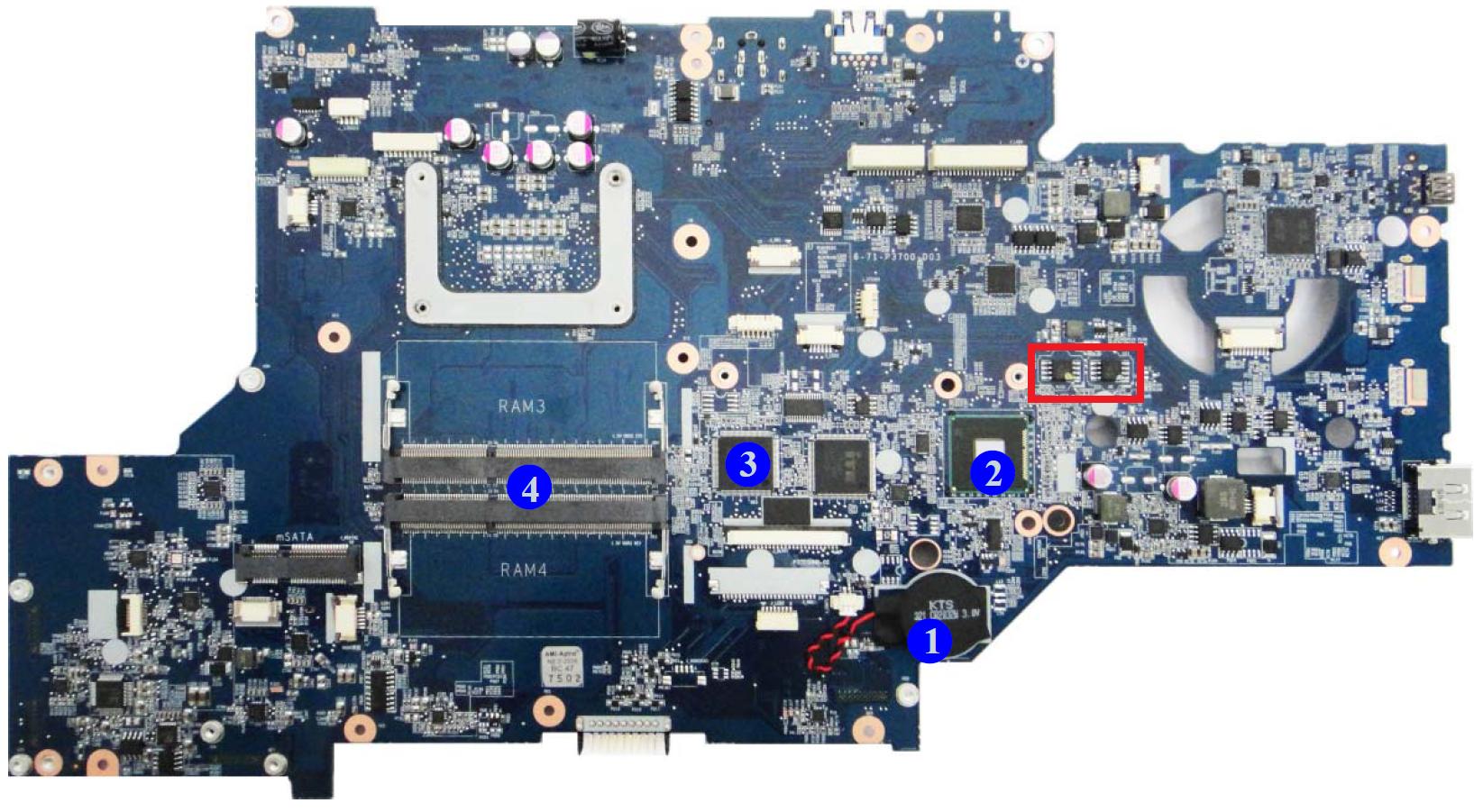
-
 1
1
-
-
No, 2.0 vs 3.0 is insignificant unless using SLI. The benefits you would get would be power savings and slightly higher performance. If you have a good Sandy Bridge CPU don't bother.




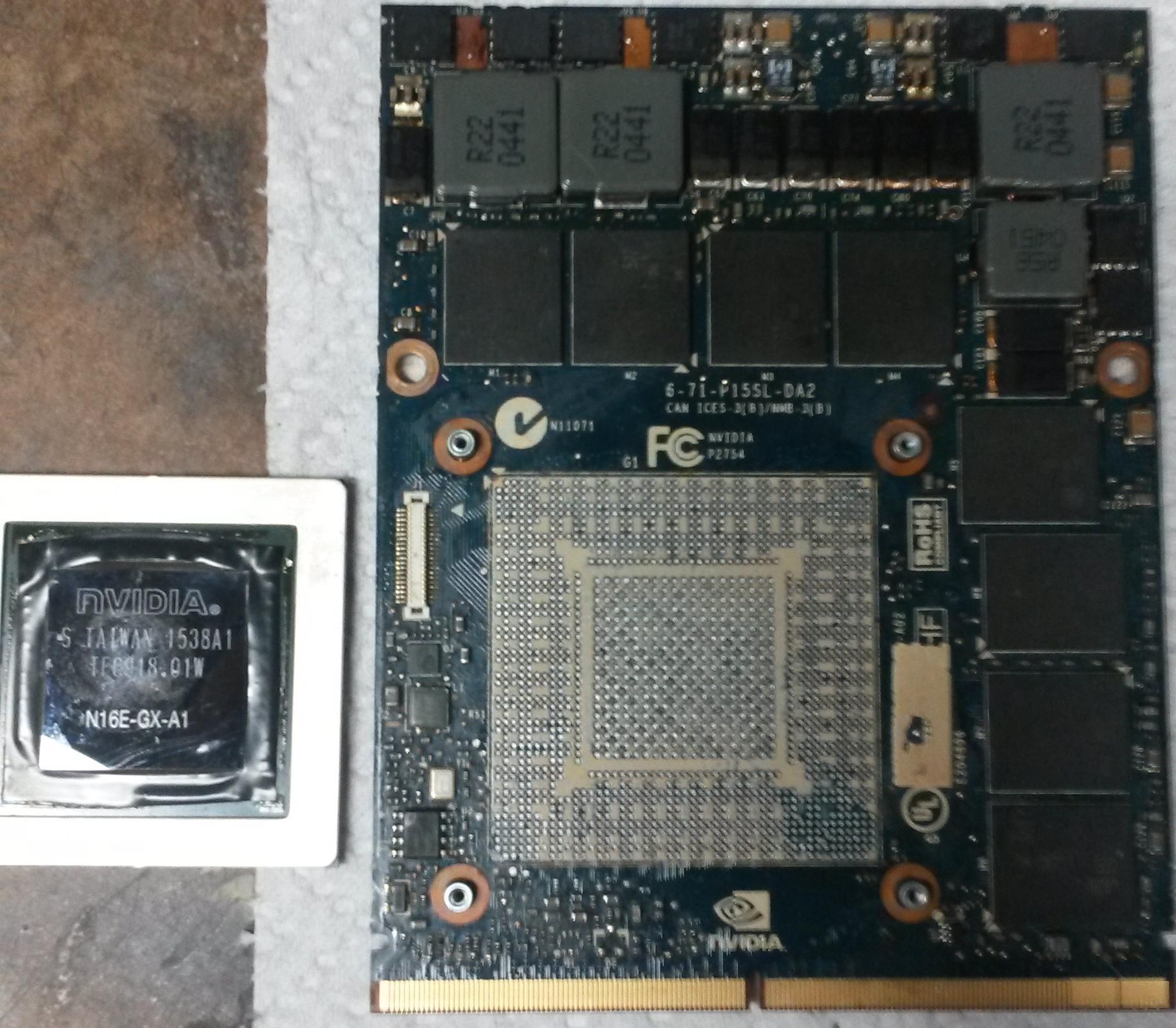
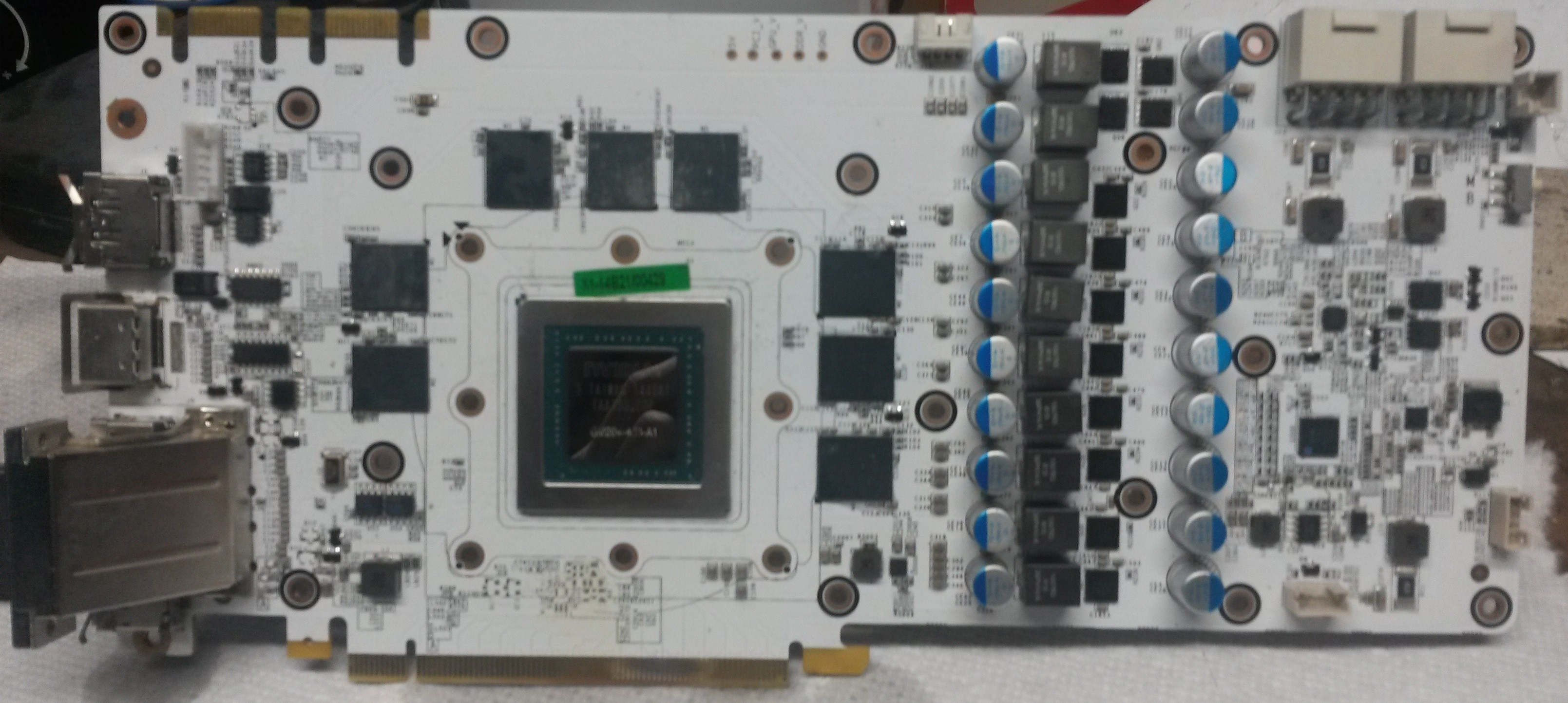
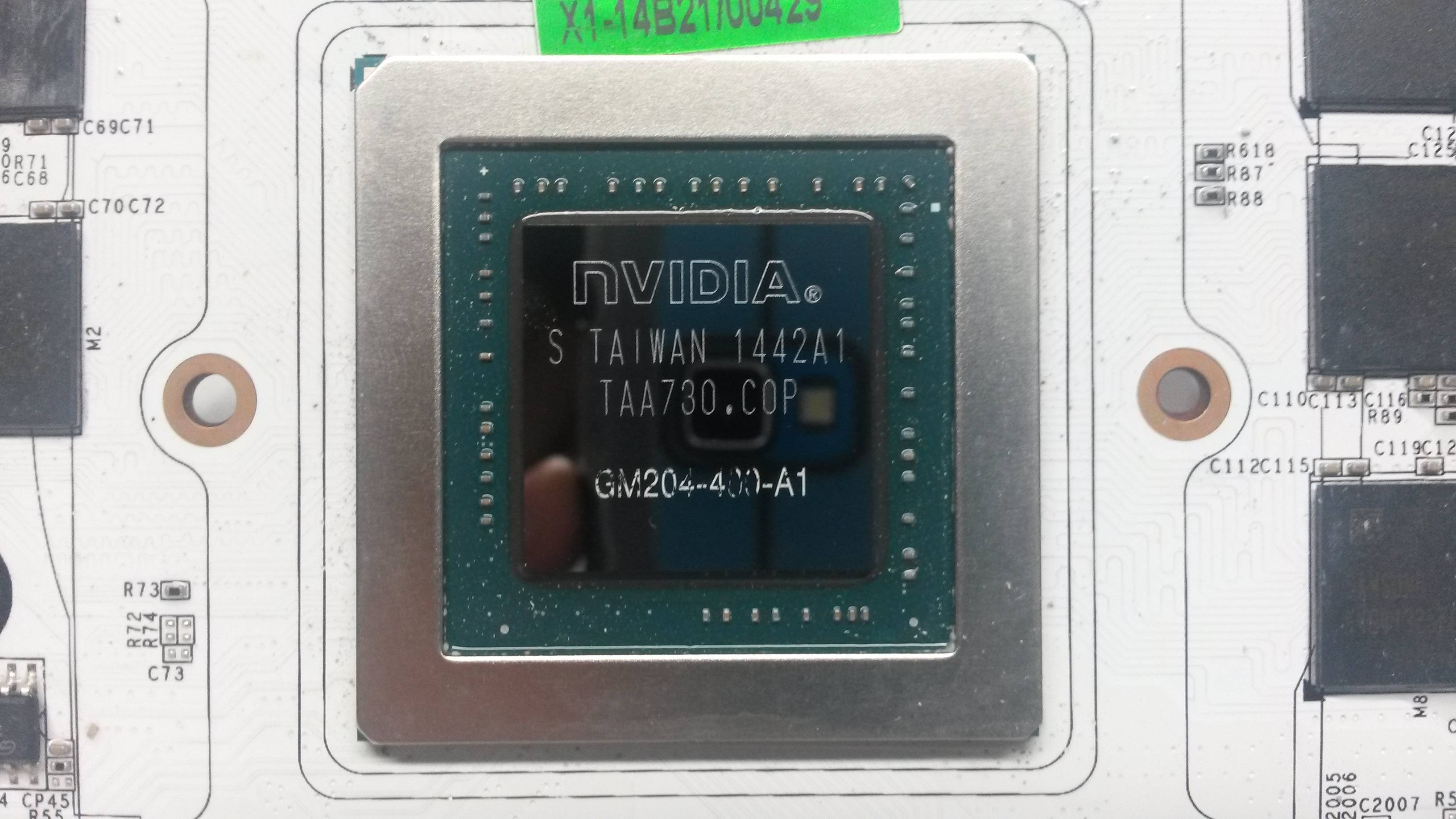
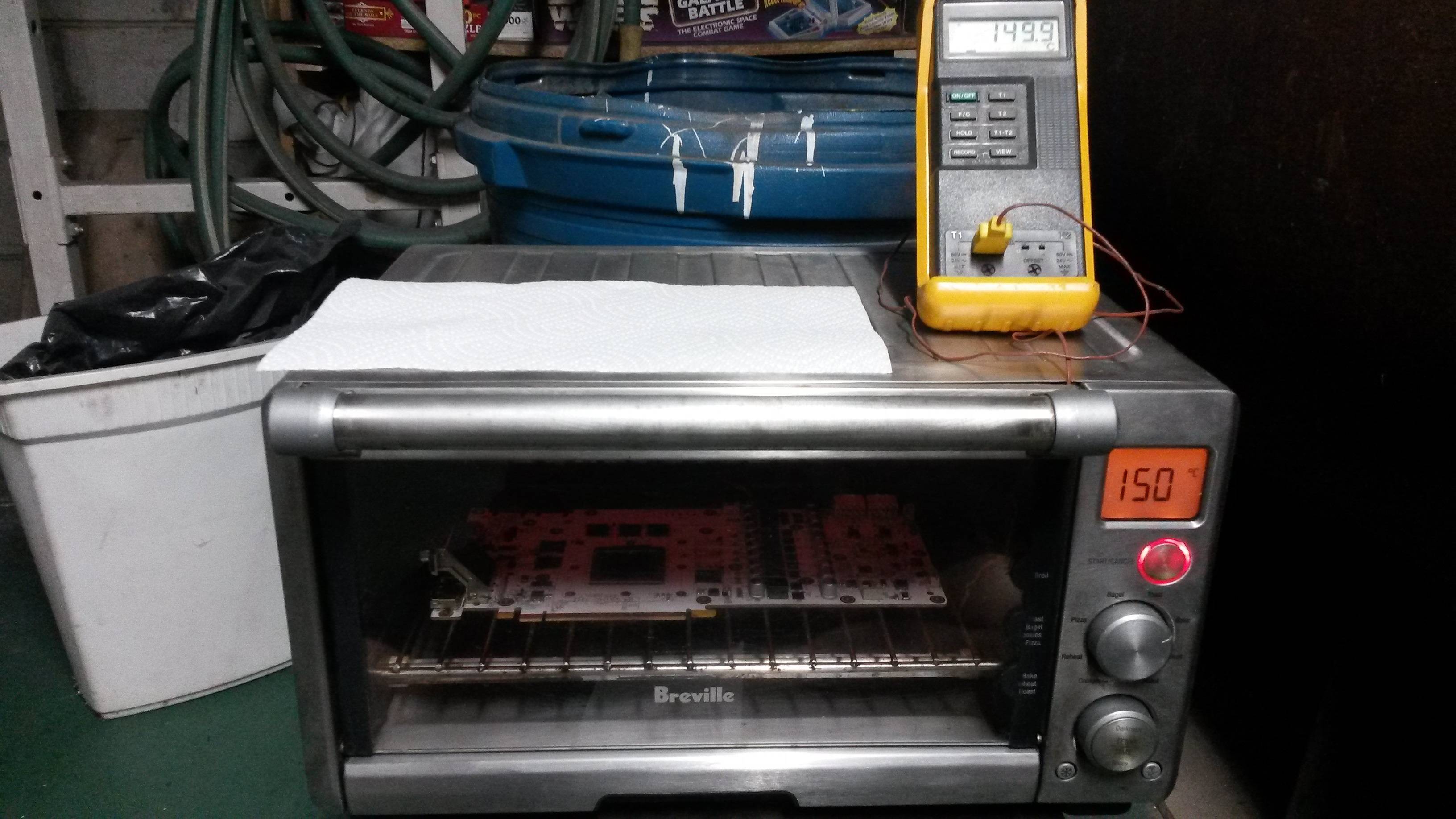
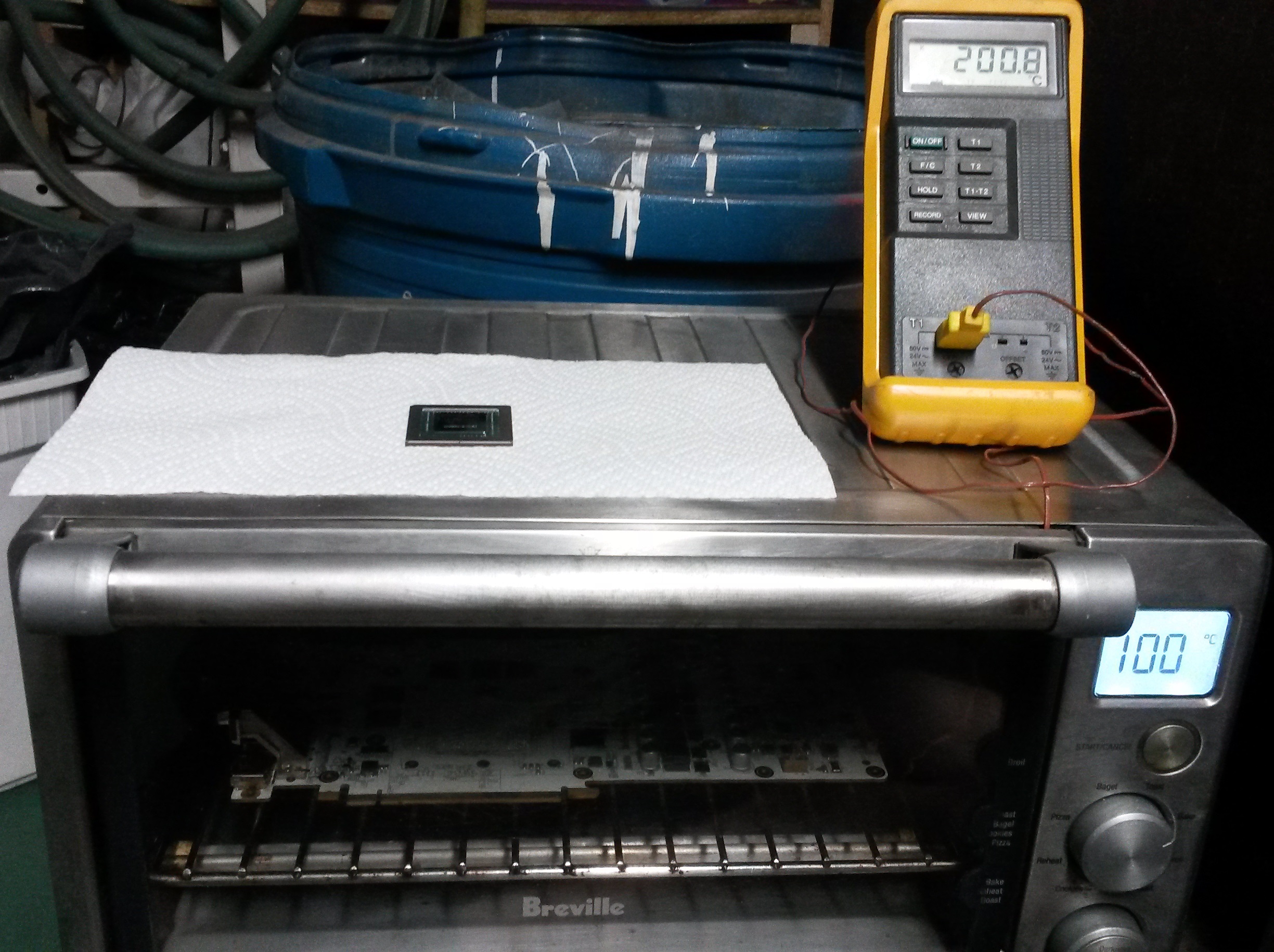

[HARDWARE MOD] 980M to Desktop 980 core upgrade
in Custom Build Worklog
Posted · Edited by Khenglish
Yeah oven use is definitely not ideal, but I do this stuff as a hobby, not a business, so I can't justify the cost of a decent bga station on a grad student stipend.
Usually I don't have a hard time with figuring out if I melted all the solder or not. When adding a core to a pcb I can look from the side and see the core drop slightly when all solder balls become molten. Removing a core is much more tedious, but is still not as bad as reballing.
What I usually spend the most time on is reballing. On the first try on a core I find usually around a dozen solder balls randomly around the core did not wet to the solder pads. I then clean all flux off, remount the stencil and try again. On this 2nd try I usually finally have all balls on, but not all are centered properly on their solder pads. I then remove the stencil, clean all flux off, try again with fresh flux, and even then I still usually have a few balls that are not centered. If I give them a little nudge when molten they will finally center on the pad. This whole process takes hours, and I would really like to shorten it. I find my heat gun will often heat stencils too unevenly making the stencil warp so much that solder balls can slide under the stencil, so this means long heating cycles in the toaster. Plus the uneven heating by a heat gun really only makes 63/37 use viable, as unleaded solder's melting point is so close to temps that kill the core package.